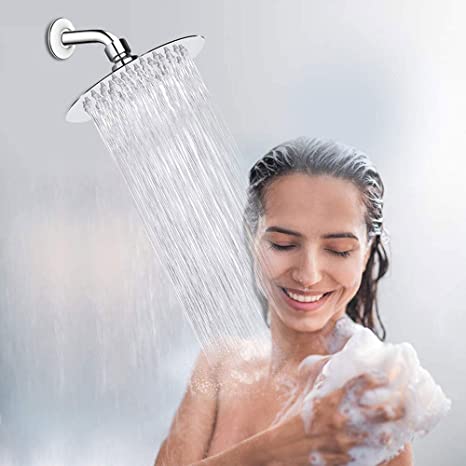
April 17, 2023
While you shower, your skin comes into contact with a large volume of water. That is why it is always better to have a shower head with wide coverage.
A shower Head is one of the most important things in your bathroom. It controls the temperature and pressure of the water that you shower with. It also has other functions like controlling water flow and sprays. If maintained well, it can last for a long time. The components of a shower head can get damaged over time, too. That’s where repairing shower faucets come in. In this blog, we’ll tell you about all the components of a shower head and how to repair them if they break down. Let’s begin.
What is a shower system?
A shower system is a combination of valves, volume controls, diverts, shower head(s), body sprays, and hand showers that are installed in your shower area. A shower system may also incorporate a tub filler.
Shower systems must be designed to ensure adequate water pressure, hot water supply, and drainage. Installation of a shower system typically requires a contractor with experience in installation.
Manual valves, also known as shower mixing valves, can pose a risk of scalding and are no longer permitted in new buildings.
Popular Shower Faucet & Valve Products:
Shower faucets include showerheads, tub spouts, and other visible faucet handles and controls. Showerheads come in a variety of shapes and sizes, from curved sprays to flat sprays to handholds. Tub spouts vary as well, from arc-type nozzles for tubs with a tub valve to flat nozzles for tubs without a tub valve. Shower valves can also come with diverter valves that allow water to flow in different directions depending on the setting.
Funnel-style valves are also popular options. These valves are designed to regulate the water pressure to prevent scalding when used with tub spouts. Pressure-balancing valves are another popular option. These valves provide a smooth transition between high and low water pressure, preventing scalding. Thermostatic valves are another popular choice. These valves gradually increase water temperature as water flows through them, preventing scalding.
Shower faucets and valves are often sold separately and must be made by the same manufacturer for proper fit. Plus, popular shower faucet and valve products include tub & shower heads, shower heads (only), bar & laundry faucets, and mixing valves. The features and components of each product make them suitable for various applications and use.
Shower Faucet vs Shower Valve:
Shower faucets and shower valves are two distinct fixtures used in bathrooms. A shower faucet is a handle and diverter used to switch the water flow from tub to shower, while a shower valve is a mechanism that mixes cold and hot water before sending it to the showerhead.
Shower mixing valves have been known to cause scalding due to pressure fluctuations and are no longer permitted in new buildings. Upgrading a shower valve to an anti-scald pressure-balancing valve or a thermostatic valve can help decrease the risk of scalding. These upgrades allow hot and cold water to be mixed before reaching the shower head, reducing the risk of scalding.
If you want to ensure your bathroom safely keeps water warm and safe for bathing, upgrading your shower valve or shower faucet could be a valuable investment.

Faucet Repair Kit:
Faucet repair kits are a great resource for fixing a faucet that is not working properly. They contain many parts, including handles and valve stems, faucet parts, supply lines, and hose bibbing and sill cock fittings.
Extension kits are also available for kitchen faucets, including spout seal kits, o-rings, clips, hoses, vacuum breakers, and spray diverters. If you have the right parts for your particular faucet model, it's important to ensure that you have the right kit for them. It can be difficult to identify specific parts needed for a particular faucet model without help from online or local resources. So if you're not sure what parts to purchase for your faucet, consider consulting with the store staff or posting on forums related to shower faucets to solicit suggestions from other users.
What are the components of a shower system?
A shower system typically includes valves, volume controls, diverters, shower head(s), body sprays, and hand showers. It can also include a tub filler that helps to increase water pressure and make the bathtub bigger. To customize a shower system, accessories such as rain showerheads, custom handheld showers, shower arms, shower diverters, wall supply elbows, and more may be used. Additional components such as shower columns, rain heads, shower arm
Conclusion of Shower Head:
With shower faucets and shower valve options to choose from, you can easily select the right one for your bathroom. However, it’s essential to understand how the components work together to ensure that the shower functions as intended. With these features highlighted, you are well-equipped to make informed decisions. Remember to visit our blog for more tutorials on bathroom remodeling and design.